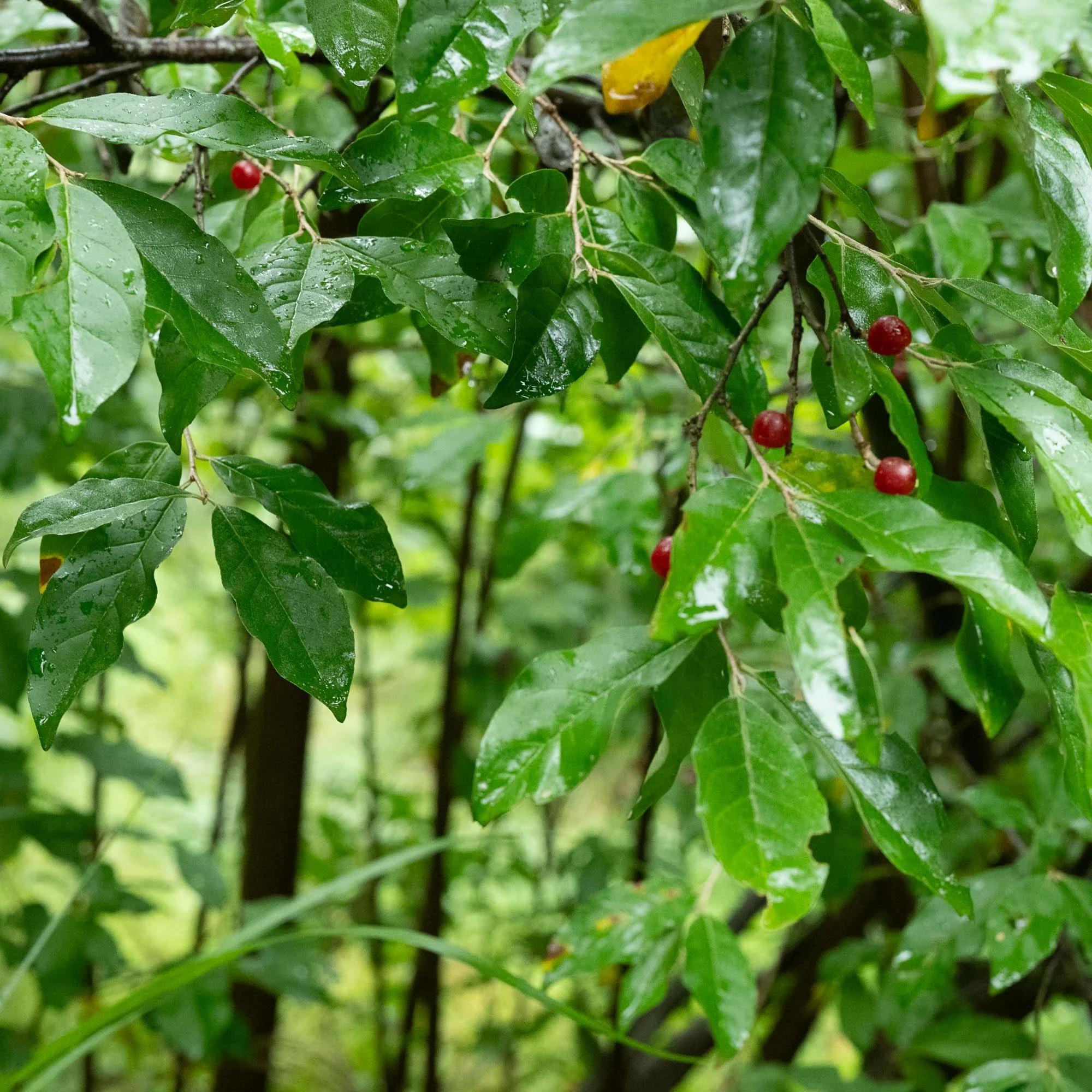Autumn Olive
Introduction
Autumn olive (Elaeagnus umbellata) is a deciduous shrub native to East Asia (Japan, Korea, and China) that was widely introduced to North America in the mid-20th century. Initially promoted for erosion control, wildlife habitat, and ornamental planting, it is now recognized as a highly invasive species across much of the United States. Its aggressive growth and prolific seed production, and allow it to outcompete native vegetation and alter ecosystem dynamics. In North Carolina it is listed as Threat Level 1 - Severe Threat.
Autumn olive along Robinson Lane in Laurel Park. August 19, 2025.
Identification
Growth form: Large deciduous shrub, typically 10–20 feet tall, with a spreading, rounded crown. Often multi-stem trunk.
Leaves: Simple, alternate, and oval with smooth margins; bright green above and distinctly silvery beneath due to dense scales.
Flowers: Small, tubular, and creamy white to pale yellow; highly fragrant; bloom in late spring (May–June).
Fruit: Small, round, reddish berries with silver flecks; produced in abundance by late summer to fall.
Bark and stems: Twigs often have small thorns; young stems are covered with silvery scales.
Ecological Impacts
Competition with native plants – Autumn olive grows quickly and forms dense thickets that shade out native grasses, wildflowers, and shrubs.
Soil alteration – As a nitrogen-fixing species, it increases soil nitrogen, disrupting the nutrient balance of ecosystems adapted to nutrient-poor conditions.
Wildlife interactions – While birds and mammals consume its berries, dispersing seeds widely, the nutritional value of the fruit is poor compared to native species. Heavy colonization reduces the diversity and abundance of native food plants.
Forest succession interference – It can colonize disturbed areas and open forests, slowing natural regeneration of native trees.
Spread and Reproduction
Seed dispersal: Each plant can produce tens of thousands of fruits annually, eaten and spread by birds and mammals.
Rapid growth: Young shrubs can produce viable fruit within 3–5 years.
Habitat tolerance: Thrives in poor soils, roadsides, open fields, forest edges, and disturbed lands. It is drought-tolerant and capable of establishing in a wide range of environmental conditions.
Management and Control
Effective control of autumn olive requires persistence and a combination of methods:
Mechanical Control
Cutting or mowing alone is not effective; re-sprouts are vigorous.
Hand-pulling is possible for very young seedlings, ensuring complete root removal.
Chemical Control
Cut-stump treatment: Cutting stems and immediately applying herbicide (e.g., glyphosate or triclopyr) to the stump prevents regrowth.
Basal bark treatment: Applying herbicide to the lower stems can be effective for smaller shrubs.
Foliar spraying may be used in large infestations but risks damage to surrounding vegetation.
Prescribed Burning and Grazing
Fire alone does not eradicate autumn olive but may reduce seedling establishment.
Goats and other browsing animals can suppress growth but will not eliminate root systems.
Long-term management
Repeated monitoring is necessary since seed banks and bird dispersal continually introduce new seedlings.
Restoration with competitive native species helps reduce re-invasion.


